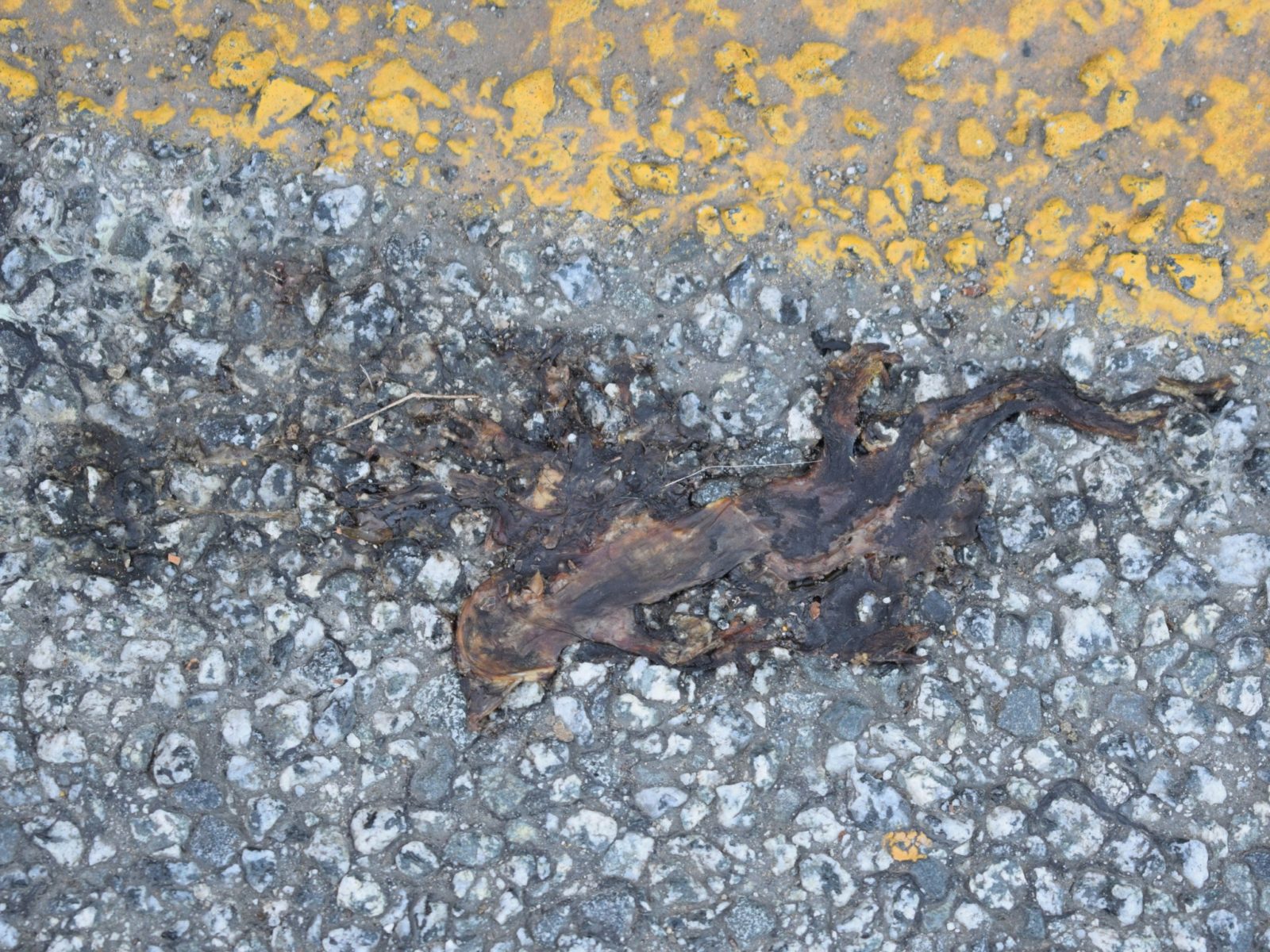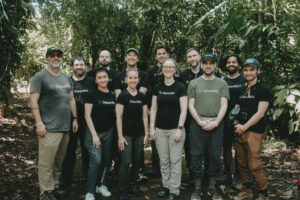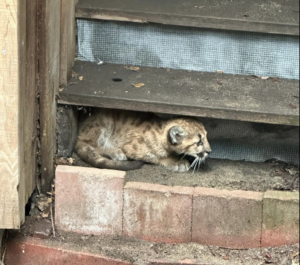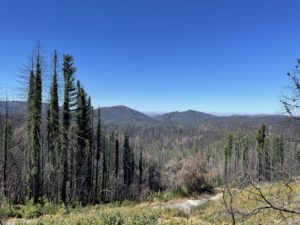More than 2,280 Pacific newts have died on Alma Bridge Road, which borders the Lexington Reservoir in the Santa Cruz Mountains, since the rainy season began in late November. We know because we’re part of a citizen science project that has counted them.
And while no one knows for sure how many newts live in the mountains around the reservoir, with an extremely high mortality rate like this year after year, it won’t take long for the population to plummet.
As more people enjoy the numerous parks around the reservoir, the number of vehicles increases accordingly. Land development and human habitation have blossomed in this area as well, resulting in a significant increase in wildlife mortality due to collisions with cars. A project is underway to protect larger animals on Highway 17. But protection for smaller animals, such as Pacific newts, is not included in that project.
Amphibians are disproportionately affected by vehicle-caused road mortalities compared to other wildlife because they migrate en masse to breeding sites. During migrations on rainy nights, there may be hundreds or even thousands of newts moving toward the same breeding pools.
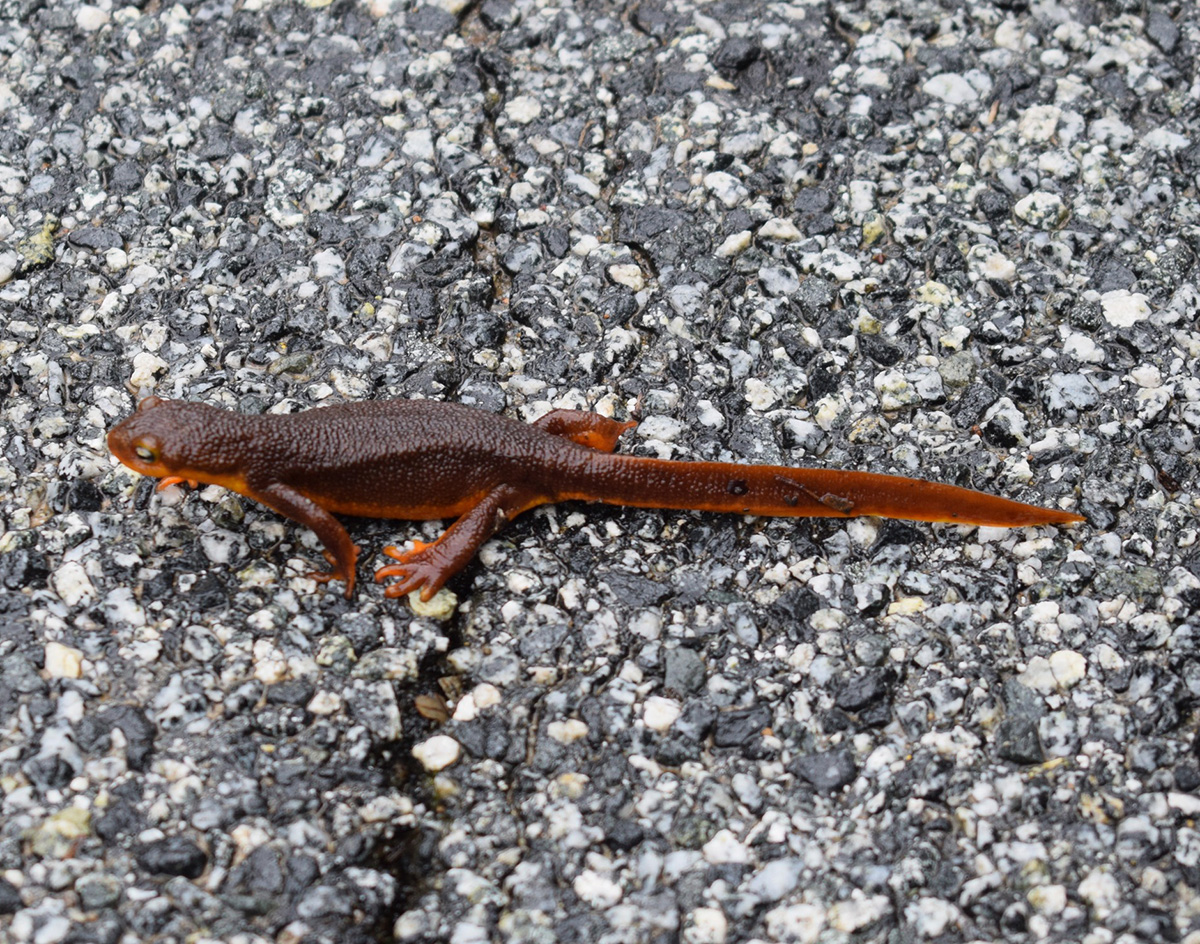
Alma Bridge Road cuts between the upland habitat of Pacific newts and the vernal streams and ponds in which they reproduce. The newts must cross this road twice – once on their migration to the vernal ponds to mate, and then again when they return to the highlands. A single vehicle driving along this road can crush dozens of these slow-moving creatures. Motorists may not even be aware this is happening, since small newts may look to a driver like twigs, leaves, or crushed bay or buckeye nuts.
Pacific newts are a type of salamander. They are mostly nocturnal, but can sometimes be seen during the daytime. There are two species of Pacific newt in the Lexington Reservoir area: California newts (Taricha torosa) and rough-skinned newts (Taricha granulosa). These two species are very similar in appearance. Both have a brown, black, or slate upper body and bright orange or yellow underparts. They have bumpy skin and can grow to a length of eight inches.
Pacific newts are born in water and live on land after metamorphosis. They spend the majority of their lives in upland forest habitats where they live through the non-breeding seasons of summer and fall in small animal burrows, under deep leaf litter, or under rocks and bark where it’s moist.
With the first rains in late November or early December, adults emerge from the saturated ground and migrate from their upland habitat to ponds and streams for breeding. Males migrate before females and remain at the breeding site longer. The ponds and streams newts choose for mating are called vernal pools because they fill with rainwater and rising groundwater in winter but then dry up as summer advances. The pools are temporary and cannot support fish.
The female newt lays her fertilized eggs in water where the larvae hatch and grow. Young newt larvae look like frog tadpoles but with longer, thinner bodies. When metamorphosis is complete, the juveniles emigrate from the breeding site and spend the next few years growing to sexual maturity. When they are fully grown, they typically return to the same breeding site year after year to mate.
When the breeding phase is over, females are the first to return to their upland habitat, followed by males and juveniles. However, some adults might remain in the pools for an additional few months to feed. Since the return migration is more sporadic and less weather-dependent than migration to the vernal pools, it is much harder to protect the newts as they make their way back to the forest.
Wildlife biologists have known about the newt roadkill problem at Lexington for years, but funding has not been available to investigate the issue. This is where citizen science can help. Citizen science has been redefining science for more than a decade now as crowd-sourced websites like iNaturalist and eBird have enabled people to take pictures using digital cameras or cellphones and upload them along with date, time, location and annotations to a central database, where they can be viewed by anyone. Scientists and naturalists can then verify the data and use it for research purposes.
Citizen scientists have been counting the newt roadkill on Alma Bridge Road since November 2017 and documenting it in an iNaturalist project called “Pacific Newts.” However, data collection for the 2017-2018 migration season was sporadic and incomplete. In an effort to collect more complete data for the 2018-2019 migration season, citizen scientists are taking roadkill counts on a weekly basis as well as documenting degradation rates of newts on roads so that newts are not re-counted.
Others have noticed a decline in newts in California as well. And representatives from local, county, state, and private agencies are getting together to discuss this complicated issue and brainstorm possible mitigations, including restricting traffic to residential use only during breeding migrations. (The East Bay Regional Park District already closes one road through Tilden Park every winter to protect newts.) They have also discussed installing structures to protect the newts while crossing roads, and potentially assisting animals across roads on rainy nights during migration. Visitors and residents can help by not driving on Alma Bridge Road when it’s dark and rainy, and taking alternative routes whenever possible.

